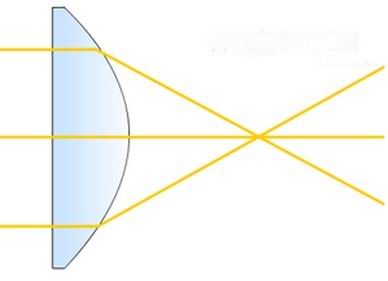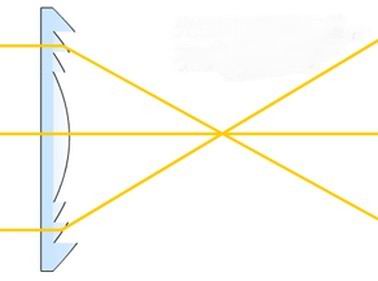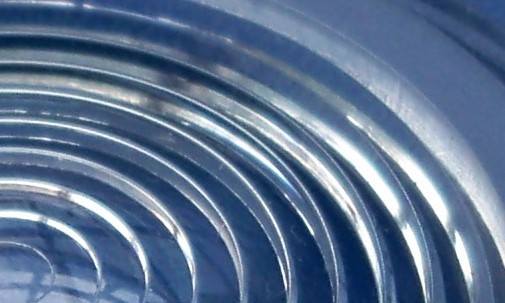Introduction of the principle and application for the Fresnel Lenses
Views: Date: 2015/7/14
Description:The Fresnel lens reduces the amount of material required compared to a conventional lens by dividing the lens into a set of concentric annular sections. An ideal Fresnel lens would have infinitely many such sections. In each section, the overall thickness is decreased compared to an equivalent simple lens. This effectively divides the continuous surface of a standard lens into a set of surfaces of the same curvature, with stepwise discontinuities between them. In some lenses, the curved surfaces are replaced with flat surfaces, with different angle in each section. Such a lens can be regarded as an array of prisms arranged in a circular fashion, with steeper prisms on the edges, and a flat or slightly convex center. In the first (and largest) Fresnel lenses, each section was actually a separate prism. 'Single-piece' Fresnel lenses were later produced, being used for automobile headlamps, brake, parking, and turn signal lenses, and so on.
  |
|
| A.Schematic diagram of the traditional spheric lens | B.Schematic diagram of the fresnel lens |
The Fresnel Lenses (Shenzhen Hongxuan Optoelectronic Technology Co.,Ltd) optics incorporates a number of key features compared to an equivalent simple lens.
1.Allows the construction of lenses of large aperture
2.Short focal length ,
3.The weight of the lens is light
4.Can be made much thinner than a comparable conventional lens, in some cases taking the form of a flat sheet.
 
|
|
| Close-up view of a flat Fresnel lens shows concentric circles on the surface |
Application:
The use of Fresnel lenses for image projection reduces image quality, so they tend to occur only where quality is not critical or where the bulk of a solid lens would be prohibitive. Cheap Fresnel lenses can be stamped or molded of transparent plastic and are used in overhead projectors, projection televisions, and hand-held sheet magnifying glasses. Fresnel lenses have been used to increase the visual size of CRT displays in pocket televisions, notably the Sinclair TV80. They are also used in traffic lights. Fresnel lenses are also used to correct several visual disorders, including several ocular-motility disorders such as strabismus.
Since plastic Fresnel lenses can be made larger than glass lenses, as well as being much cheaper and lighter, they are used to concentrate sunlight for heating in solar cookers, in solar forges, and in solar collectors used to heat water for domestic use.
Perhaps the most widespread use of Fresnel lenses, for a time, occurred in automobile headlamps, where they can shape the roughly parallel beam from the parabolic reflector to meet requirements for dipped and main-beam patterns, often both in the same headlamp unit (such as the European H4 design). For reasons of cost, weight, and impact resistance, newer cars have dispensed with glass Fresnel lenses, using multifaceted reflectors with plain polycarbonate lenses. However, Fresnel lenses continue in wide used in automobile tail, marker, and backup lights.
The extensive applications of the fresnel lens include: In door and out door lighting, colour mixing, stage lighting, aviation, whilst also being great for high peak intensity beams Optical data can be viewed on www.opticsledlens.com
Previous:Introduce Plastic Optical Materials
Next:LED Lens Terminology